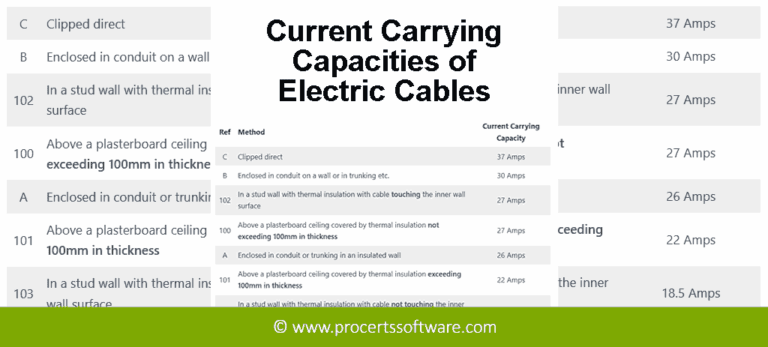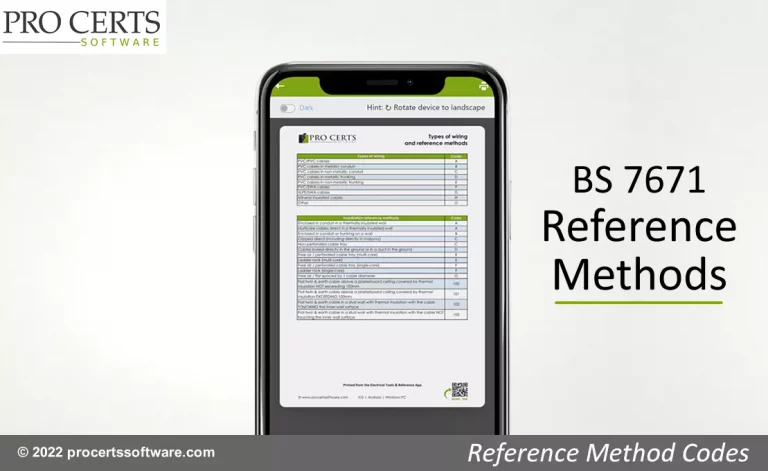SY Cables in Electrical Installations
There seems to be a lot of confusion on what SY cables can be used for so we have gathered together various snippets of information from various sources to try and clarify what an SY cable can and can not be used for.
SY cables are commonly and wrongly used in applications that are not suitable for an SY cable, many manufacturers of SY cables refer to SY cables as an “SY Control Cable” for use with (for example) control automation such as assembly lines.
What is SY Cable

SY cable gets is name from the codes set out by CENLEC (the European Committee for Electrotechnical Standardisation) and is a cable type designed as a control cable for control and automation purposes, such as assembly lines and the like.
Variants of SY cables include YY and CY cables. The 1st letter is the outer covering material and the 2nd letter is the inner insulation material.
Letter Meanings:
- S = Steel Wire Braid
- Y = PVC
- C = Copper Wire Braid
Cable Types:
- SY = Steel Wire Braid/PVC
- YY = PVC/PVC
- CY = Copper Wire Braid/PVC
SY Braid
– PROTECTION AGAINST EMC
Some manufacturers of SY cables state the braid (or screen / shield) of an SY cable is designed for the prevention/reduction of signal/EMC (Electromagnetic Compatibility) interference, much like the braid/screen of a coax cable is.
– PROTECTION AGAINST MECHANICAL DAMAGE
Many manufactures of SY cables include “mechanical protection” or “additional mechanical protection” in their data sheets/tech info – However we could not find any information on the actual level of mechanical protection claimed.
It is important to note that the Steel Wire Braid in SY cables IS NOT an equivalent of Steel Wire Armour (SWA).
Can SY cable wire braid be used as an earth?
The braid (or screen) of an SY cable must not be used as a Cpc (circuit protective conductor/earth) because of the high resistance of the braid and the braid could melt under fault conditions.
The braid of an SY cable should be earthed by the use of suitable and correctly installed SY cable glands, ideally earthed at both ends of the cable.
Note the braid should be earthed but not used as the circuit protective conductor.
Can SY cable be buried in the ground?
No, SY cables do not offer enough mechanical protection to permit it to be buried directly in the ground, additional suitable (and sealed watertight) mechanical protection would be required, such as a cable duct.
SY cables are not designed to be submerged in water hence the use of a “sealed watertight” cable duct, if such a thing exists.
Can SY cable be used outside?
SY cables should not be installed outside where it will be exposed to UV (the sun) and/or water (i.e. rain).
When an SY cable is exposed to UV the UV will overtime breakdown the insulation, possibly to an extent where the steel wire braid is exposed, which in turn will corrode when exposed to the elements.
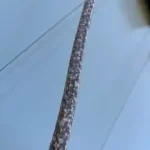
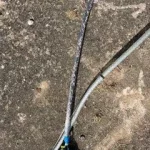
Consideration should also be taken in to account of the SY cables normal operating temperature.
SY Cable Glands
The correct type and size of SY cable glands should always be installed in accordance with the manufactures instructions. We have found two types of SY cable glands, the standard copper SY gland and the EMC SY gland.
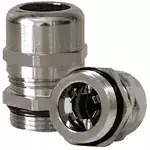

SY Cable and BS 7671
Regulation 133.1.1 Selection of Electrical Equipment –
Every item of equipment shall comply with the appropriate British or Harmonized Standard. In the absence of such a standard, reference shall be made to appropriate International (IEC) or the standard or the appropriate standard of another country.
For further information see page 26 of BS 7671.
Regulation 511.1 Compliance with Standards (Note 2) –
The use of foreign national standards not based on an IEC Standard, and/or not compatible with the safety provisions of BS 7671, is not recommended.
On-Site Guide Section 7.9 Installation of non-standard cables –
For the purpose of this Guidance Publication and to ensure compliance with BS 7671, the installation and use of non-standard cables, such as SY, CY and YY cables is discouraged.
One cable manufacturer has issued a statement in relation to the use of SY, CY and YY cables in UK-based fixed installations, to view this statement see the more information links at the bottom of this post.
We found another cable manufacturer who say they do not manufacture SY, CY or YY cable types as they do not comply with any manufacturing standard, see the more information links at the bottom of this post for further details.
If an SY cable is used in an installation which is subject to BS 7671 then a deviation should be noted on the electrical installation certificate to note as such. In addition a comprehensive risk assessment should also be attached to the electrical certificate, the risk assessment should include the name of the person who is taking full responsibility for the installation and use of such a cable.
An Electrician might to refuse to install an SY cable in an installation which is covered by BS 7671, based on the current guidance.
BASEC SY Cable
BASEC (British Approvals Service for Electric Cables) have launched a new certification scheme for YY, SY and CY control cables.
The scheme comprises of 6 BASEC specifications BA 1411, BA 1413, BA 1415 for PVC composition and BA 1412, BA 1414, BA 1416 for LSHF composition.
Does this mean SY cable may finally be recognised by BS 7671? We’ll have to wait and see.
For further information see the more information links at the bottom of this post.
| SY cables and their applications | |
|---|---|
| Buried directly in the ground | ✗ |
| Installed outside (Exposed to water i.e. rain etc..) | ✗ |
| Installed outside (Exposed to UV i.e. the sun) | ✗ |
| Used as fixed wiring (Final circuit/sub-main circuit) | ✗ |
| Installed inside (Damp / humid conditions) | ✗ |
| Installed inside (Exposed to UV emitting lamps i.e. In a green house) | ✗ |
| Approved for use in electrical installations covered by BS 7671 | ✗ |
| Manufactured to a specific British Standard | ✗ |
| Control & automation applications (In specific conditions) | ✓ |
Summary
It seems currently SY cable is not approved for use within electrical installations covered by BS 7671 and it is not manufactured to any specific British Standard.
If you decide ignore the guidance and use an SY cable for for anything other than for what it is intended for (a control cable) it will be your responsibly to ensure all relevant standards and regulations are met and that safety is not compromised.
A deviation will need to be noted on the electrical installation certificate along with an attached risk assessment.
Common issues electricians are finding with SY cables is generally due to the wrong cable type being used or not being installed correctly such as the wrong cable glands fitted.
SY cable when installed outside and exposed to UV will overtime breakdown the clear outer insulation causing it to discolour and crack. When the outer insulation is cracked or the wrong cable glands have been fitted water can get under the outer insulation causing the braid to corrode.
PERCEIVED OUTCOME: Do not use SY cables for any installation which is within the scope of BS 7671.Always check with the manufacturer of the SY cable as cable specifications can vary and/or change.
It is the designers responsibility to ensure a suitable cable type is selected for its intended environment, conditions and application along with any conformance/compliance of relevant regulations and standards.
Further information:

